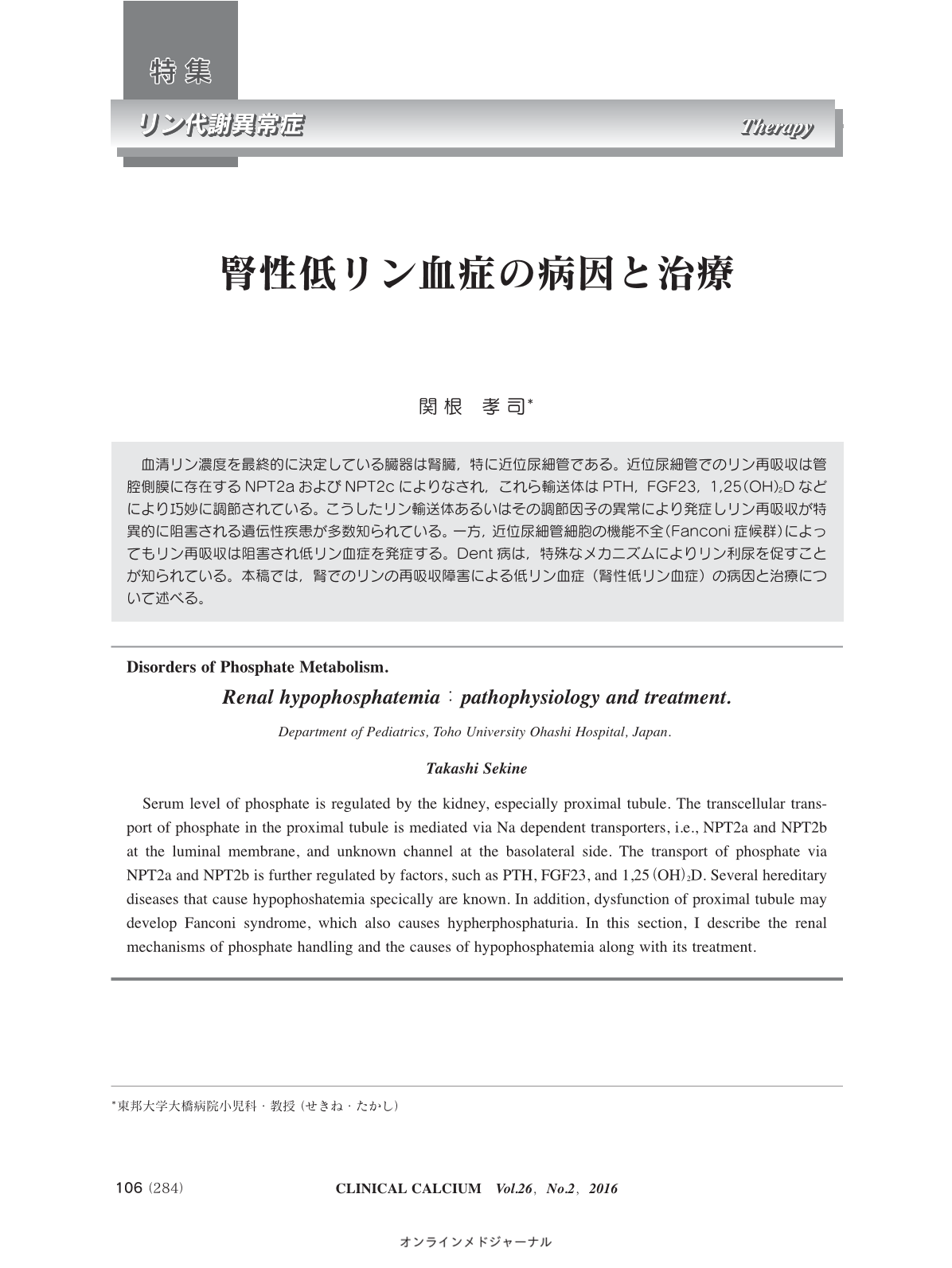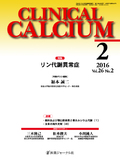Japanese
English
- 有料閲覧
- Abstract 文献概要
- 1ページ目 Look Inside
- 参考文献 Reference
血清リン濃度を最終的に決定している臓器は腎臓,特に近位尿細管である。近位尿細管でのリン再吸収は管腔側膜に存在するNPT2aおよびNPT2cによりなされ,これら輸送体はPTH,FGF23,1,25(OH)2Dなどにより巧妙に調節されている。こうしたリン輸送体あるいはその調節因子の異常により発症しリン再吸収が特異的に阻害される遺伝性疾患が多数知られている。一方,近位尿細管細胞の機能不全(Fanconi症候群)によってもリン再吸収は阻害され低リン血症を発症する。Dent病は,特殊なメカニズムによりリン利尿を促すことが知られている。本稿では,腎でのリンの再吸収障害による低リン血症(腎性低リン血症)の病因と治療について述べる。
Serum level of phosphate is regulated by the kidney, especially proximal tubule. The transcellular transport of phosphate in the proximal tubule is mediated via Na dependent transporters, i.e., NPT2a and NPT2b at the luminal membrane, and unknown channel at the basolateral side. The transport of phosphate via NPT2a and NPT2b is further regulated by factors, such as PTH, FGF23, and 1,25(OH)2D. Several hereditary diseases that cause hypophoshatemia specically are known. In addition, dysfunction of proximal tubule may develop Fanconi syndrome, which also causes hypherphosphaturia. In this section, I describe the renal mechanisms of phosphate handling and the causes of hypophosphatemia along with its treatment.



